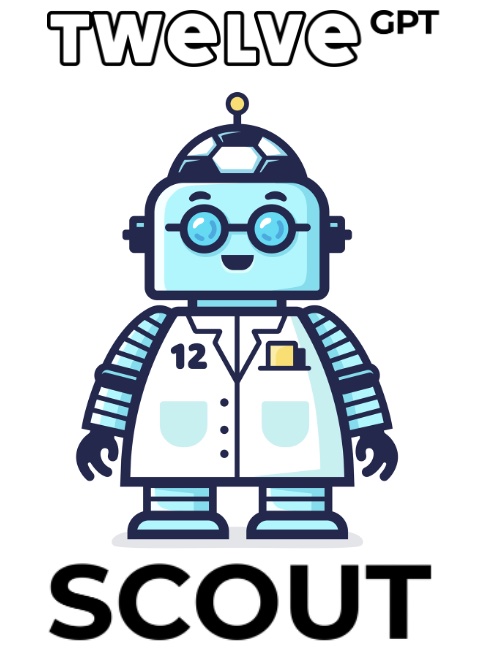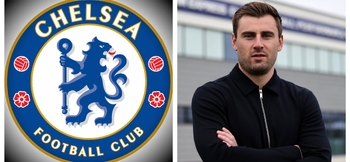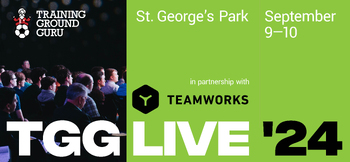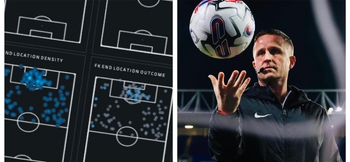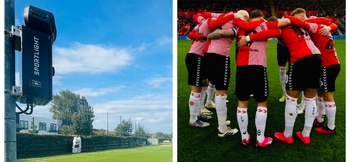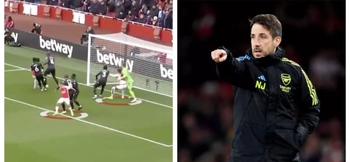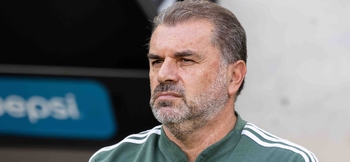TGG Podcast #57: Jes Buster Madsen - Role of neuroscience in football
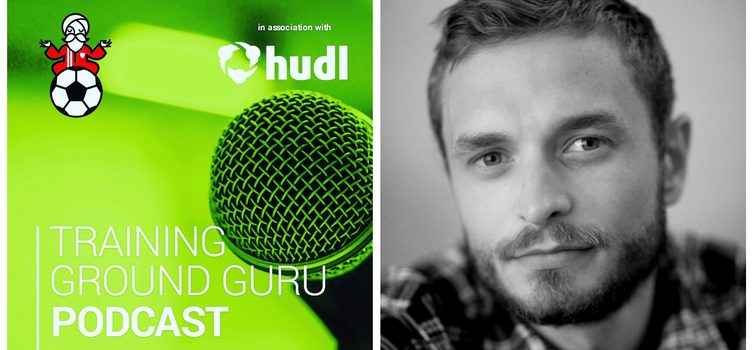
Jes Buster Madsen has been Head of Research and Development at FC Copenhagen since August 2021
Written by Training Ground Guru — November 8, 2023
JES BUSTER MADSEN is Head of Research and Development at FC Copenhagen and a world leader in the application of cognitive neuroscience in football.
In Episode #57 of the TGG Podcast, he explained how and why 'brain training' will be the next big growth area in football. You can listen via the player below and read an edited transcript after that.
BACKGROUND
Jes Buster Madsen: Since I love football, I started looking into what we know about the brain and football and I realised there wasn’t a lot. Most of the research was on concussions, but there was basically no research on perception, so-called game intelligence and decision making in football. There was some, but it wasn’t an established field.
I also realised there were a lot of tech companies arguing they had the best solution for training the brain in football and I was a bit sceptical about that, due to my knowledge about neuroscience.
So what I did was call Sune Smith-Nielsen (FC Copenhagen Academy Manager) and we ended up having a good chat. He invited me for a meeting and then I did a small lecture for them. My perspective was, 'Don’t buy anything, don’t believe anything, just start at the most basic level, because basic neuroscience itself can help player development and training in general.'
There are a lot of scientific facts about the brain that I didn’t see being utilised. That ended in more discussions and in the end Sune offered me the job as Head of Research and Development.
UNDERSTANDING THE BRAIN IN FOOTBALL
I saw there was no real research that could tell us about football players and I saw there were products that said, 'Do this and you will become a better player' and saw there was no link, because we don’t understand the basic scientific facts about the brain in terms of football.
One of the reasons for that is that in neuroscience when we understand a phenomenon, we either go into some kind of genetic manipulation of a rat or fruit fly, kill the rat and then look at the brain. We cannot kill Academy players and do that research! The other thing is looking at changing things in the brain and looking what is happening in the brain while the rat is running around, mainly with single cell recordings. Again, we cannot implement electrodes in the brains of players.
The last thing is we would often experiment with deep brain stimulation, clinical perspectives, and we cannot do that. Brain imaging is amazing but it has one fundamental flaw - movement is its antagonist. If you move in a scanner, you cannot use the results. You cannot put an fMRI scanner on Ronaldo and ask him to kick a ball, because it weighs multiple tons. So neuroscience is cut off from all the normal types of investigation it would do.
And you cannot take a rat and make it play football and understand football from there!
So neuroscience had to be a bit more speculative. What we did was to ask, 'What is the cognitive model?' We came up with our own hypothesis, picking knowledge from basketball, American Football, general perception theories, general knowledge about the brain, attention research, scanning research from Geir Jordet - put all these things together to create an idea of this is what we think happens when you play football.
Sune saw that there was a potential. It is an undeniable fact that it is the brain that is playing football. We know a lot about the physiology, we know everything about the calves and the thighs, we know a lot about the tactics, but we are not so knowledgeable about the brain processes that underly these things.
That’s something that Sune saw and he asked me the question, 'How do we measure tactical potential?' My answer was, 'We need a model. With the model you can make a more valued argument to coaches and start to make hypotheses about players.'
You can say, 'If a player lacks this skill he might have this problem on the field.' You can show what it means to have a well working attention when you play football and then you show them videos of that and how to train that. The same with scanning, working memory, pattern recognition.
So this is the next thing we did - we looked at which types of cognitive capacities are linked to high performance in football. There have been six, eight studies on that, showing there are capacities that elite players out-perform in.
You move slowly, build more and more practical knowledge about this. You go to the field and see the players, you do exercises and see what works, then you slowly start to understand grassroots neuroscience. We said, 'Let’s look at the game with this textbook neuroscience knowledge and then see what kind of insights we get that we didn’t have before.'
We spent at least a year giving lectures to the coaches, talking about this constantly. We had six months where the coaches used exercises with cognitive elements, so they understood what I was talking about and how to put it on the pitch. Now they have to implement it themselves into training and the exercises.
ECOLOGICAL PSYCHOLOGY
Today it (ecological psychology) is a well-established term in training methodology. The reason it is important is that, at least at FC Copenhagen, we train the way we play.
That means all aspects of your exercises and training have to have a link to the way you play, but that is easier said than done. What we started to analyse is the language of the coaches, the behaviour of the players. The way to explain that is through neuroscience, because your perceptional system is only being trained in the environment it is in.
If you want to make a player’s scanning behaviour better… you shouldn’t train the mechanical movement of the head, you should train the relevance and point of making that movement and you may as well start with that.
We also had an idea, from an ecologocial perspective, of priming the players on movements of players and team-mates more than board tactics. How much do you actually learn from dots and arrows on a whiteboard? That takes a lot of intelligence to take those dots and transfer them into a bodily movement and when you are playing the game you might discount that information, because you are not really able to take that into a movement.
So we started to work a bit more on what is the movement that allows for that tactical change. You want to tell the striker to make the deep run. Do you do that by saying, 'When the eight has the ball and is looking towards the ball, you make the run.' You need to understand his movements and when he is about to turn, you make the run.
Or you can explain this with dots on the whiteboard. The brain is immensely skilled at understanding visual clues. The biggest sensory system in the brain, which takes up by far the most space, is the visual system. So you should utilise that immense capacity by understanding small changes in body position and when you should move and making that timing.
Perception is… all the raw sensory data your system receives and that is a lot. And you don’t consciously receive all of it, most of it is not being processed consciously. A good example of this is the cocktail party effect. You are standing at a party, speaking with someone and can only hear what they are saying. But suddenly someone shouts fire and you hear that word.
The way we explain that in neuroscience is that you actually heard all the conversations going on, but when a sensory stimuli that was relevant, it was shown to the consciousness and that is where attention comes in.
The perceptional system might be how good you are at receiving and analysing data, but attention is the types of perceptional stimuli you are consciously aware of and that is where priming becomes important. You can pre-prime players on which types of perceptional streams are worth looking at and that is where the good coaches come in, because they teach the players which sources of information you should look at.
There could be sounds of the fans, the referee, the coach; seeing; homeostasis, your own body and how it is feeling right now; whether your opponent looks nervous. There are a million types of information that go into a match and this is why priming is very important.
COGNITIVE ASSESSMENT TOOL
The BYBCAT (Be Your Best Cognitive Assessment Tool) we developed with Be Your Best, we are the only ones using that. That is the VR cognitive testing that gives us the cognitive profile, 14 different measurable cognitive abilities - their working memory score, pattern recognition, attention, scanning, motor inhibition - all these things combined.
Be Your Best will go to market with this soon, although we are not commercially affiliated with them.
We have found that central players in our Academy have higher rates of scanning and also working memory and pattern recognition. Wide players have a tendency to have much better reaction times. That allows us to say if that player is supposed to play first team in the next year, he needs to develop the cognitive capacities that are needed in his position, so you can have a way more specialised focus in terms of what to train and how to develop the player.
What we are trying to do is understand the pre-requisites of making decisions, so when they step on the pitch, we have trained their brain from so many different perspectives, so they have the scanning, the working memory, motor inhibition, to make the best possible decision.
If you ask me, 99% of all skills are trained. Everything in the brain can be trained. If you are blind, you can teach yourself to see from sounds. There is overwhelming evidence that the brain is neuroplastic and can change. It takes at least three to six months to scan, for example, which is why it is better to tell the U14 player than the U21 - the earlier the better.
Our cognitive model will be published within four months. It is written by me and a Professor and will show the good articles to read and give a hypothesis of the brain in football.
FUTURE OF NEUROSCIENCE IN FOOTBALL
Neuroscience is very complex. When something is complex, people tend to find the most complex solution. I think the opposite way around - we should find the most simple idea and work from that. Then, maybe in 10 years, we can find a good complex solution.
There is going to be way more of this cognitive testing in the future. The clubs have the money and want to compete on any marginal gain they can find. The brain is such a fundamental thing in this that I’m sure more tests are going to come, more neuroscientists are going to start to be involved in this, especially at the Academy level.
It could be that every club in the top 50 in the world has a cognitive neuroscientist, I don’t know. Our U14s have a physical trainer, their load is being looked at, monitored, and it might be the same for the cognitive.
In three years there might be someone who has created a test where you put the player in, they play the game and you get a full analysis. But I think you will still always need someone to explain why motor inhibition, working memory are important and there you need someone who understands football and neuroscience.
You can increase your playing speed quite a lot with preparation and that’s quite easy - if you teach a player early on to be well prepared when he receives the ball and play it on the first or second touch.
Scanning is what opened the field. But looking at scanning is like only looking at the engine of a car. You need other things to work. We are not necessarily seeing players who are skilled at scanning. We don’t care if you scan 0.3 or 0.8 times per second, we care about why you do it and in which relation.
That comes from a bigger understanding, which is the attention, pattern recognition, working memory, motor inhibition, decision. That is what gives the scanning sense and meaning. If you only focus on scanning, you are not going to make the player much better.
The other thing is the sharing of ideas. I would love the clubs to publish more, because I don’t know what they are actually doing. We are going to publish the things we are doing, we want to share it.







